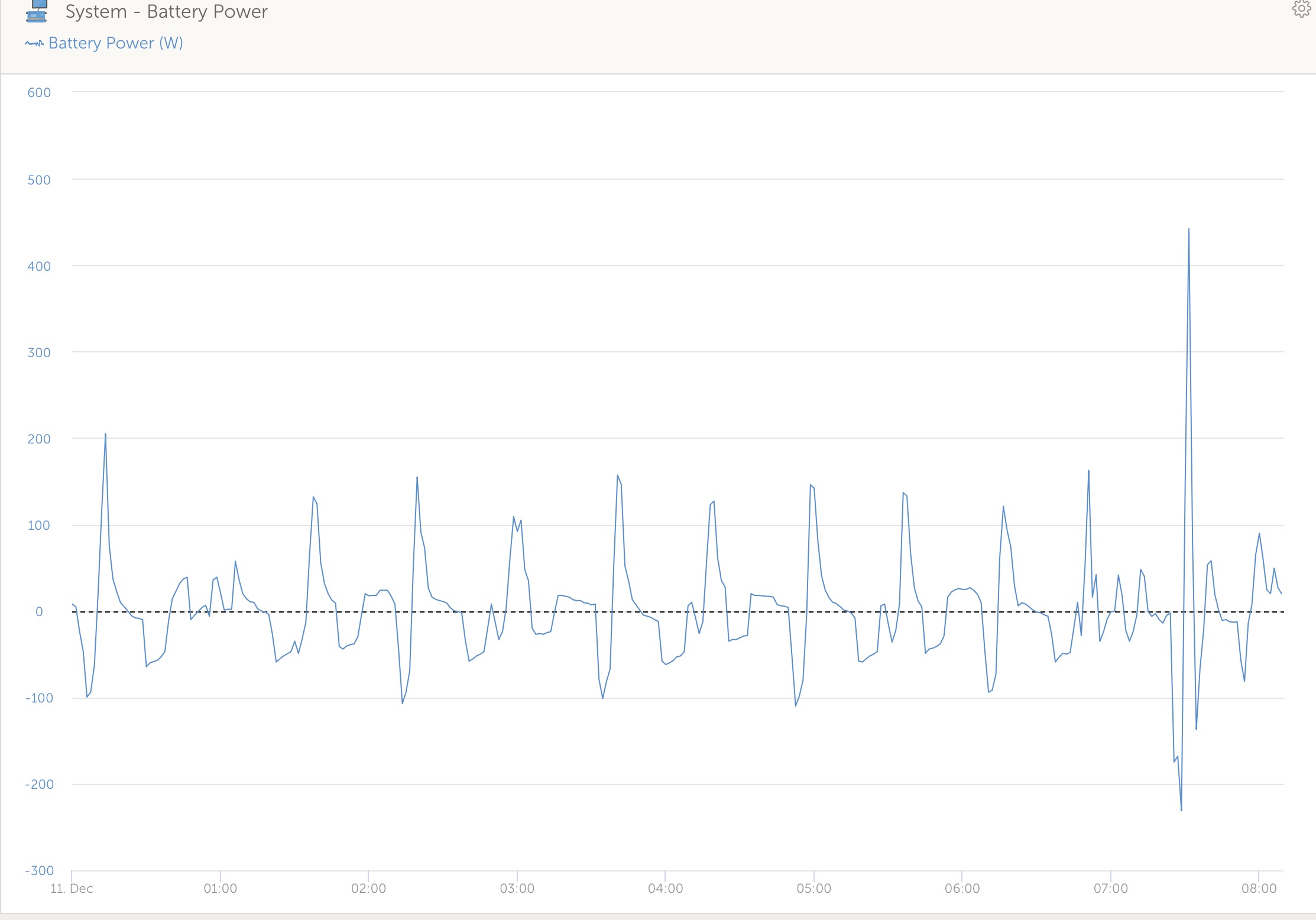For the next three months I am going to be living on my boat in a marina and I’d like to know whether it is best to “float” or to cycle my recently installed 2 * Victron LiFePO4 Smart 12.8v 180Ah batteries.
The rest of the config includes a Lynx Smart BMS, MultiPlus (1600w inverter 70A charger) and 860w of solar distributed through 3 SmartSolar 100/30s.
There’s insufficient sun to fully charge the batteries each day so I have the option of letting the batteries drain down to around 15% over 2 to 3 days before bring them back up to 100% using the MultiPlus - or simply leaving the MultiPlus on all of the time in which case the BMS maintains things at 13.46v and 99.8%.
As you can see from the attached screenshot, midnight to 6am, the batteries are being given a short burst every 45 minutes to compensate for the fridge and freezer draw.
Daily consumption is 120-140Ah from the fridge and freezer, charging and running personal devices, lighting, running the diesel heater and an electric kettle.
Which option is best if I want to maximise the life of the batteries - or doesn’t it matter in this situation?

